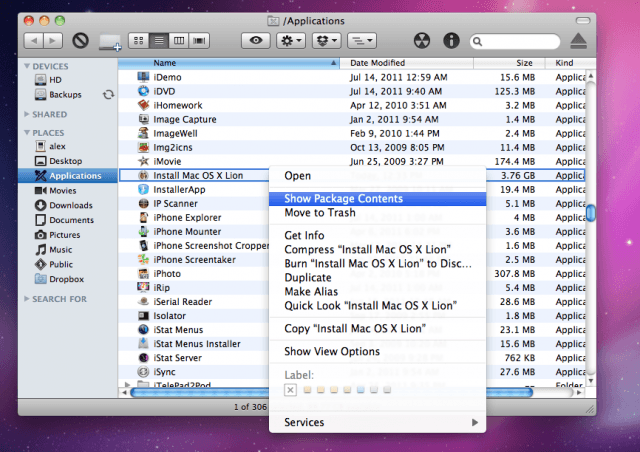Jul 16, 2006 Hi All, Can anyone tell me what is the difference between a.dmg file and.pkg file for Mac OS? The.pkg file is created using the PackageMaker of Mac OS for creating the installers.
PostgreSQL is the default database on macOS Server as of OS X Server version 10.7.macOS without the macOS Server add-on installed includes only the PostgreSQLlibpq shared library.
Simply run TransMac.exe then follow on screen instructions.Step #3: Plug your USB drive to your Windows PC.You will need at least 8GB USB drive to make a bootable USB installer of macOS Catalina/ Mojave.Step #4: Open TransMac if it is not already.Now you will need to run TransMac to procced further if it is not open already. Read Also:Steps to Create macOS Catalina Bootable USB Installer on Windows PC?Step #1: Download TransMac.To download this software open your broswer and download it from the. Install dmg file on mac. Step #2: Install TransMac.Installation procedure of TransMac is as sample as installing other programs on Windows PC.
macOS Server 10.12 ships with PostgreSQL 9.4. Minor updates are providedby Apple, but not necessarily right after a new PostgreSQL minor release.
There are several other installers available for PostgreSQL on macOS,which is the recommended way to install.
Interactive installer by EnterpriseDB
Download the installercertified by EnterpriseDB for all supported PostgreSQL versions.
This installer includes the PostgreSQL server, pgAdmin; a graphical tool for managing and developingyour databases, and StackBuilder; a package manager that can be used to download and installadditional PostgreSQL tools and drivers. Stackbuilder includes management,integration, migration, replication, geospatial, connectors and other tools.
This installer can run in graphical, command line, or silent install modes.
The installer is designed to be a straightforward, fast way to get up and running withPostgreSQL on macOS.
Advanced users can also download azip archiveof the binaries, without the installer.This download is intended for users who wish to include PostgreSQL as part of another application installer.
Platform support
The installers are tested by EnterpriseDB on the following platforms. They will generally work on newer versions of macOS as well:
After installing 7-Zip, you can simply double-click a DMG file to open it and browse its contents. If you’d like to extract the files from the DMG so they’re easier to work with, right-click the DMG file, point to the “7-Zip” menu, and then choose one of the extraction options. Is a dmg file safe download.
| PostgreSQL Version | 64-bit macOS Platforms |
|---|---|
| 12 | 10.12 - 10.14 |
| 11 | 10.12 - 10.14 |
| 10 | 10.10 - 10.12 |
| 9.6 | 10.10 - 10.12 |
| 9.5 | 10.8 - 10.10 |
| 9.4 | 10.6 - 10.9 |
Postgres.app
Postgres.app is a simple, native macOS app that runs in the menubar without the need of an installer. Open the app, and you have a PostgreSQL serverready and awaiting new connections. Close the app, and the server shuts down. 5e dmg monster creation vs monster manual 2.
Fink
PostgreSQL packages are available for macOS from theFink Project.Please see the Fink documentation for information on how to install packages.
A list ofPostgreSQL packagescan be found using the package search tool on the Fink website.
MacPorts
PostgreSQL packages are also available for macOS from theMacPorts Project. Please see theMacPorts documentation for information on how to install ports.
A list ofPostgreSQL packagescan be found using the portfiles search tool on the MacPorts website.
Homebrew
PostgreSQL can also be installed on macOSusing Homebrew. Please see the Homebrewdocumentation for information on how to install packages.

Mac Os X Dmg Package Free
Xcode 6.2. A listof PostgreSQLpackages can be found using the Braumeister search tool.
| Uniform Type Identifier (UTI) | com.apple.package |
|---|---|
| UTI conformation | public.directory |
| Container for | documents, bundles |
In the Apple macOS operating system, a package is a file system directory that is normally displayed to the user by the Finder as if it were a single file. [1] Such a directory may be the top-level of a directory tree of objects stored as files, or it may be other archives of files or objects for various purposes, such as installer packages, or backup archives.
Definition[edit]
The package is a common file system abstraction used by Apple operating systems, such as macOS and iOS. It is a directory that may contain a hierarchy of files or objects that represent a preserved, organized state. A package is displayed to users like a single file in the Finder application to avoid being changed by the user. However, the content of packages may be accessed through special keyboard and mouse combination events. For this purpose, the control-click, or right-click, menu displays a directive Show Package Contents.[1]
Some documents may be represented as packages:[2]
- Rich Text Format documents with images, which carry the .rtfd extension;
- Dashboard widgets;
- partially downloaded files in Safari, which carry the .download extension;
- Final Cut Pro X Camera Archives, which contain multiple QuickTime videos and carry the .fcarch extension;
- project files in GarageBand, Keynote, Pages, Numbers, iMovie and Xcode;
- Installer packages.
The Uniform Type Identifier (UTI) for a package is com.apple.package.[3]
Bundles[edit]
A package that has a standardized structure for storing executable code and its associated resources, is called a bundle.
See also[edit]
Macos High Sierra Dmg File
References[edit]
Mac Os X Dmg Package Download
- ^ ab'About Bundles'. Bundle Programming Guide. Apple, Inc. Retrieved 2011-03-16.
- ^'Document Packages'. Bundle Programming Guide. Apple, Inc. Retrieved 2011-03-16.
- ^'System-Declared Uniform Type Identifiers'. Uniform Type Identifiers Reference. Apple, Inc. Retrieved 2011-03-16.